-
 Bitcoin
Bitcoin $118,698.3676
0.16% -
 Ethereum
Ethereum $3,428.4877
5.97% -
 XRP
XRP $3.2496
9.52% -
 Tether USDt
Tether USDt $1.0002
0.00% -
 BNB
BNB $725.6930
4.36% -
 Solana
Solana $174.8923
4.52% -
 USDC
USDC $0.9997
-0.02% -
 Dogecoin
Dogecoin $0.2139
6.02% -
 TRON
TRON $0.3155
4.62% -
 Cardano
Cardano $0.8045
7.12% -
 Hyperliquid
Hyperliquid $46.6582
-1.72% -
 Stellar
Stellar $0.4676
0.80% -
 Sui
Sui $4.0143
0.38% -
 Chainlink
Chainlink $17.1546
2.97% -
 Hedera
Hedera $0.2458
3.27% -
 Bitcoin Cash
Bitcoin Cash $496.5967
-0.06% -
 Avalanche
Avalanche $22.8813
3.13% -
 Shiba Inu
Shiba Inu $0.0...01439
3.42% -
 UNUS SED LEO
UNUS SED LEO $8.8389
0.42% -
 Toncoin
Toncoin $3.2113
2.82% -
 Litecoin
Litecoin $101.2646
4.24% -
 Polkadot
Polkadot $4.2262
2.32% -
 Monero
Monero $340.4295
2.92% -
 Pepe
Pepe $0.0...01365
2.92% -
 Uniswap
Uniswap $8.9702
-2.78% -
 Bitget Token
Bitget Token $4.7675
2.00% -
 Dai
Dai $0.9998
-0.02% -
 Ethena USDe
Ethena USDe $1.0003
-0.04% -
 Aave
Aave $324.6394
-2.11% -
 Bittensor
Bittensor $433.6051
-0.88%
How does a public chain smart contract work? Code is automatically executed without trust
Smart contracts on public blockchains automate agreement enforcement, executing code trustlessly without intermediaries, ensuring terms are met autonomously.
May 16, 2025 at 02:08 pm
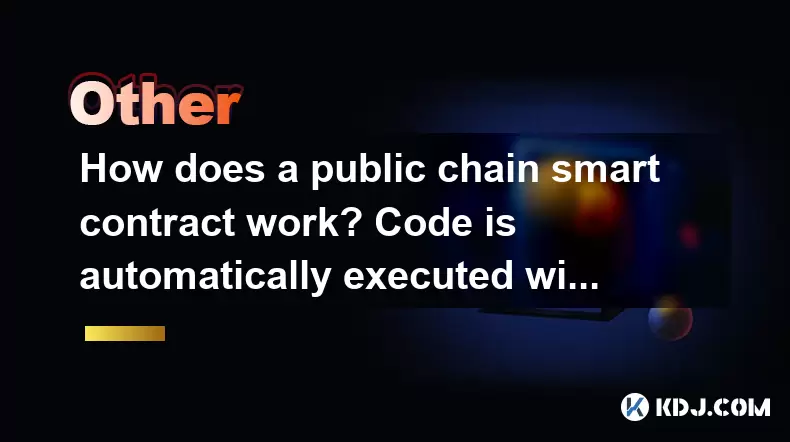
A public chain smart contract is a self-executing program that runs on a blockchain network, designed to automatically enforce the terms of an agreement between parties. The concept of "code is automatically executed without trust" refers to the trustless nature of smart contracts, where the execution of the contract does not rely on intermediaries or third parties, but solely on the code itself. Let's delve into how this works and explore the intricacies of smart contract functionality on a public blockchain.
The Basics of Smart Contracts
Smart contracts are essentially programs stored on a blockchain that execute when certain predefined conditions are met. They are written in specific programming languages, such as Solidity for Ethereum, and are deployed onto the blockchain where they become immutable and tamper-proof. The idea behind smart contracts is to automate the execution of agreements, ensuring that all parties adhere to the terms without the need for a trusted third party.
Deployment on a Public Chain
To deploy a smart contract on a public blockchain like Ethereum, the following steps are typically followed:
Write the Contract: The first step is to write the smart contract code using a suitable programming language. For Ethereum, this would be Solidity. The code defines the rules and conditions of the contract.
Compile the Code: Once written, the code needs to be compiled into bytecode that the Ethereum Virtual Machine (EVM) can execute. This is done using a Solidity compiler.
Deploy the Contract: The compiled bytecode is then deployed onto the Ethereum network. This involves sending a transaction to the network that includes the bytecode and some Ether to cover the gas costs. Once the transaction is mined and included in a block, the smart contract is deployed and has a unique address on the blockchain.
Interact with the Contract: After deployment, users can interact with the smart contract by sending transactions to its address. These transactions trigger the execution of the contract's functions based on the conditions specified in the code.
Automatic Execution and Trustlessness
The phrase "code is automatically executed without trust" highlights two key aspects of smart contracts: automatic execution and trustlessness.
Automatic Execution: Once a smart contract is deployed, it runs autonomously based on the conditions coded into it. For example, if a smart contract is designed to release funds when certain conditions are met, it will automatically execute this action without any human intervention. This automation ensures that the terms of the contract are enforced consistently and reliably.
Trustlessness: Smart contracts operate on a trustless basis, meaning that the parties involved do not need to trust each other or any intermediary. The trust is placed in the code and the underlying blockchain network. Since the blockchain is decentralized and maintained by a network of nodes, it is resistant to manipulation and fraud. The code of the smart contract is transparent and verifiable by anyone, adding an additional layer of trust in the system.
Examples of Smart Contract Use Cases
Smart contracts have a wide range of applications within the cryptocurrency ecosystem. Here are a few examples:
Decentralized Finance (DeFi): Smart contracts are the backbone of DeFi platforms, enabling functions such as lending, borrowing, and trading without traditional financial intermediaries. For instance, a lending platform might use a smart contract to automatically manage loan agreements, interest payments, and collateral liquidation.
Token Sales and ICOs: Initial Coin Offerings (ICOs) often use smart contracts to manage the distribution of tokens. The contract can automatically handle the sale process, ensuring that tokens are distributed to investors based on the amount of cryptocurrency they send to the contract address.
Supply Chain Management: Smart contracts can be used to automate and enforce agreements in supply chains, ensuring that goods are delivered and payments are made according to predefined conditions. This can increase transparency and efficiency in the supply chain process.
The Role of Oracles in Smart Contracts
While smart contracts are powerful, they have limitations in terms of accessing real-world data. This is where oracles come into play. Oracles are services that provide smart contracts with external data, allowing them to interact with the world outside the blockchain. For example, a smart contract for an insurance policy might use an oracle to fetch weather data to determine if a payout should be triggered.
Security Considerations
Given the immutable nature of smart contracts, security is a critical concern. Once a smart contract is deployed, it cannot be changed, so any vulnerabilities in the code can lead to significant issues. Here are some security practices to consider:
Code Audits: Before deploying a smart contract, it should be thoroughly audited by experienced developers to identify and fix potential vulnerabilities.
Testing: Extensive testing, including unit tests and integration tests, should be conducted to ensure the contract behaves as expected under various conditions.
Formal Verification: This is a mathematical approach to proving the correctness of the code. While not always feasible, it can provide a high level of assurance about the contract's behavior.
Upgradeable Contracts: Some developers use upgradeable smart contracts, which allow for the code to be updated if necessary. This is achieved through a proxy pattern where the actual logic can be changed without altering the contract's address.
Interacting with Smart Contracts
To interact with a smart contract, users typically use a blockchain wallet or a decentralized application (dApp) that interfaces with the contract. Here's how it works:
Connect Wallet: Users connect their blockchain wallet (e.g., MetaMask) to the dApp or directly to the blockchain network.
Send Transaction: To execute a function of the smart contract, users send a transaction to the contract's address. This transaction includes the function call and any necessary parameters.
Pay Gas Fees: Users must pay gas fees to cover the computational costs of executing the transaction on the blockchain. The gas fees are calculated based on the complexity of the operation and the current network congestion.
Transaction Confirmation: Once the transaction is broadcast to the network, it is verified by nodes and miners. When it is included in a block and mined, the smart contract executes the specified function, and the result is recorded on the blockchain.
Frequently Asked Questions
Q: Can smart contracts be used for any type of agreement?
A: While smart contracts are versatile, they are best suited for agreements that can be clearly defined in code and do not require human judgment or complex legal interpretations. They are ideal for automating straightforward transactions and processes but may not be suitable for agreements that require nuanced decision-making.
Q: What happens if there is a bug in a smart contract?
A: If a bug is discovered in a smart contract after deployment, it can be challenging to address due to the immutable nature of blockchain. In some cases, the community may decide to fork the blockchain to reverse the effects of the bug, as happened with the DAO hack on Ethereum. Alternatively, if the contract is designed to be upgradeable, the code can be updated to fix the bug.
Q: How do smart contracts ensure privacy?
A: Smart contracts on public blockchains are transparent by design, meaning that all transactions and contract states are visible to anyone. For privacy-sensitive applications, developers may use techniques such as zero-knowledge proofs or off-chain computation to protect sensitive data while still leveraging the benefits of smart contracts.
Q: Are there any costs associated with using smart contracts?
A: Yes, there are costs associated with deploying and interacting with smart contracts. These costs are typically in the form of gas fees, which are paid in the native cryptocurrency of the blockchain (e.g., Ether on Ethereum). The gas fees cover the computational resources required to execute the contract's functions and store data on the blockchain.
Disclaimer:info@kdj.com
The information provided is not trading advice. kdj.com does not assume any responsibility for any investments made based on the information provided in this article. Cryptocurrencies are highly volatile and it is highly recommended that you invest with caution after thorough research!
If you believe that the content used on this website infringes your copyright, please contact us immediately (info@kdj.com) and we will delete it promptly.
- Maharashtra Government Nurses Launch Indefinite Strike: A Healthcare Crisis?
- 2025-07-18 04:30:13
- Hilbert Group, Syntetika, and Tokenization: Bridging DeFi and Institutional Finance
- 2025-07-18 05:30:12
- Crypto Regulation in the US House: Decoding the CLARITY Act and What It Means for You
- 2025-07-18 04:30:13
- Superman Soars on Coins and Medals: A Collector's Guide to Comic Art Treasures
- 2025-07-18 05:30:12
- Bitcoin Whale Wallets in Motion: What's the Buzz?
- 2025-07-18 05:35:13
- Pepeto, Dogecoin, Popcat: Meme Coin Mania in 2025!
- 2025-07-18 05:50:12
Related knowledge
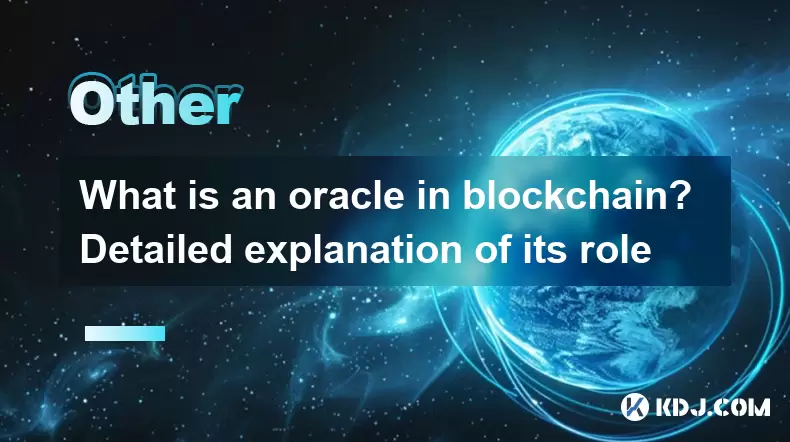
What is an oracle in blockchain? Detailed explanation of its role
Jun 21,2025 at 06:14am
Understanding the Concept of an Oracle in BlockchainIn the realm of blockchain technology, an oracle is a trusted third-party service that connects sm...
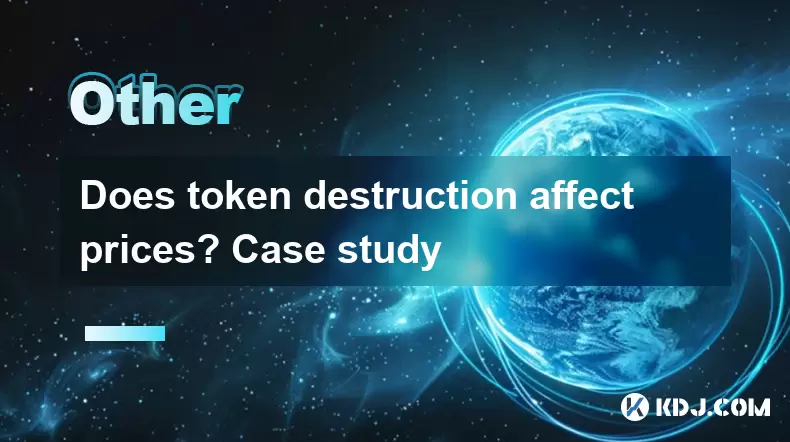
Does token destruction affect prices? Case study
Jun 22,2025 at 02:50am
Understanding Token DestructionToken destruction, commonly referred to as token burning, is a process where a portion of cryptocurrency tokens is perm...
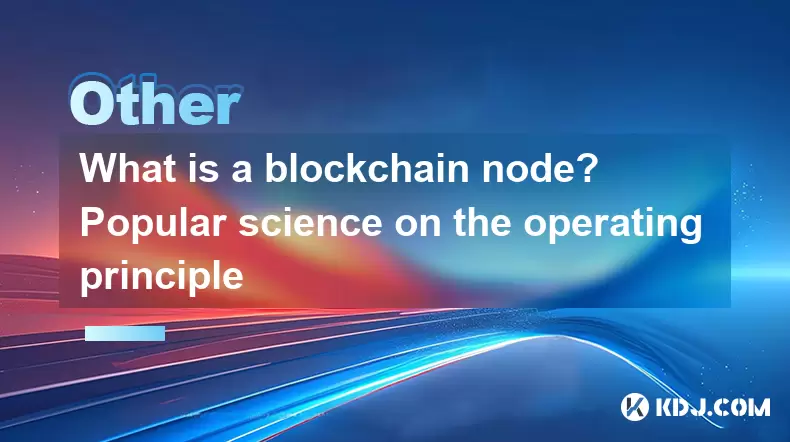
What is a blockchain node? Popular science on the operating principle
Jun 22,2025 at 11:00pm
Understanding the Basics of a Blockchain NodeA blockchain node is essentially a computer connected to a blockchain network that participates in valida...
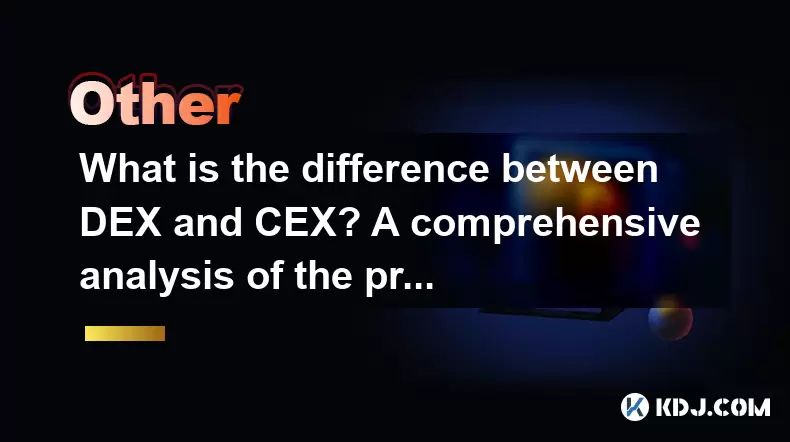
What is the difference between DEX and CEX? A comprehensive analysis of the pros and cons
Jun 24,2025 at 09:42am
What is a DEX (Decentralized Exchange)?A DEX, or Decentralized Exchange, operates without a central authority. Unlike traditional platforms, DEXs allo...
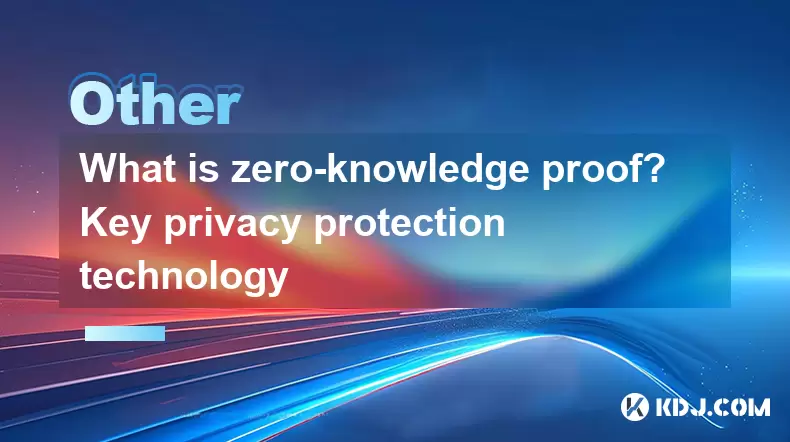
What is zero-knowledge proof? Key privacy protection technology
Jun 22,2025 at 07:29pm
Understanding Zero-Knowledge ProofZero-knowledge proof (ZKP) is a cryptographic method that allows one party to prove to another party that they know ...
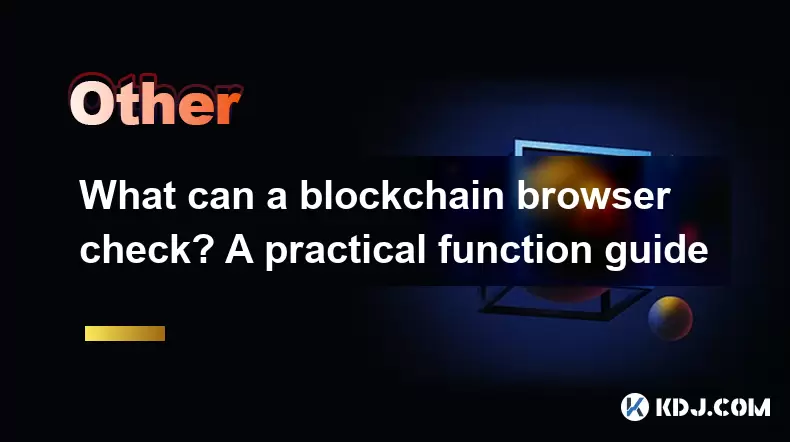
What can a blockchain browser check? A practical function guide
Jun 20,2025 at 07:35pm
Understanding the Role of a Blockchain BrowserA blockchain browser serves as a powerful tool for anyone interacting with blockchain networks. It allow...

What is an oracle in blockchain? Detailed explanation of its role
Jun 21,2025 at 06:14am
Understanding the Concept of an Oracle in BlockchainIn the realm of blockchain technology, an oracle is a trusted third-party service that connects sm...

Does token destruction affect prices? Case study
Jun 22,2025 at 02:50am
Understanding Token DestructionToken destruction, commonly referred to as token burning, is a process where a portion of cryptocurrency tokens is perm...

What is a blockchain node? Popular science on the operating principle
Jun 22,2025 at 11:00pm
Understanding the Basics of a Blockchain NodeA blockchain node is essentially a computer connected to a blockchain network that participates in valida...

What is the difference between DEX and CEX? A comprehensive analysis of the pros and cons
Jun 24,2025 at 09:42am
What is a DEX (Decentralized Exchange)?A DEX, or Decentralized Exchange, operates without a central authority. Unlike traditional platforms, DEXs allo...

What is zero-knowledge proof? Key privacy protection technology
Jun 22,2025 at 07:29pm
Understanding Zero-Knowledge ProofZero-knowledge proof (ZKP) is a cryptographic method that allows one party to prove to another party that they know ...

What can a blockchain browser check? A practical function guide
Jun 20,2025 at 07:35pm
Understanding the Role of a Blockchain BrowserA blockchain browser serves as a powerful tool for anyone interacting with blockchain networks. It allow...
See all articles

























































































